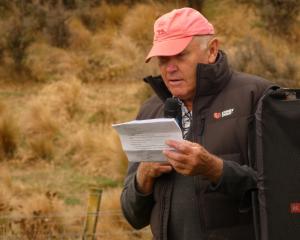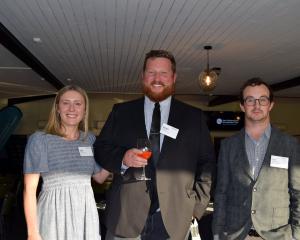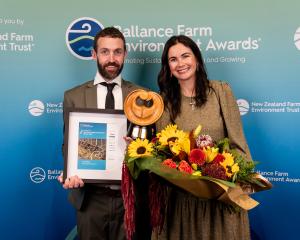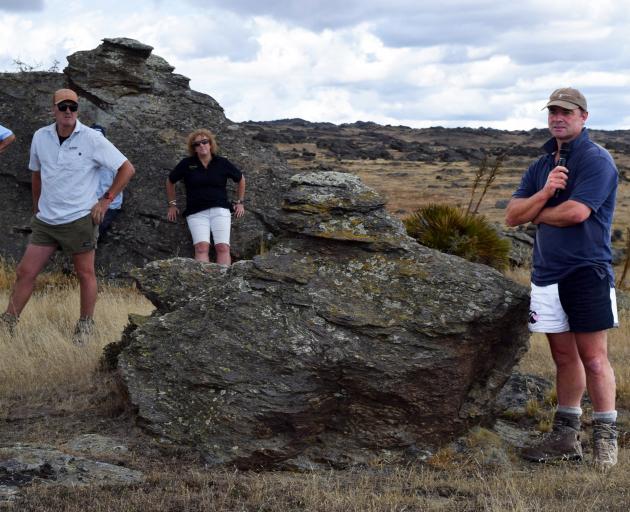
Standing among his team in a catching pen in his shearing shed, Mr Paterson used rugby analogies to describe his sheep and beef business to about 120 people at a Beef + Lamb New Zealand field day.
"The last few seasons haven’t gone our way and this one is looking like another battle, fought on a dry Central Otago field, where the sprigs won’t break the surface," he said.
Farming was not a game for the faint-hearted and there was no offseason.
"It is a year-round grind, where the weather, the market and land calls the shots."
Changes need to made on-farm, or levers pulled, when farming in a variable climate.
"The levers are about to get pulled pretty hard," he said.
A lever already pulled to reduce costs was applying less fertiliser to the hill country.
"Rightly or wrongly, I’ve heard some horror stories of people doing this in the 1980s but hopefully this won’t hurt us."
Modelling tool Farmax was used to support decision-making.
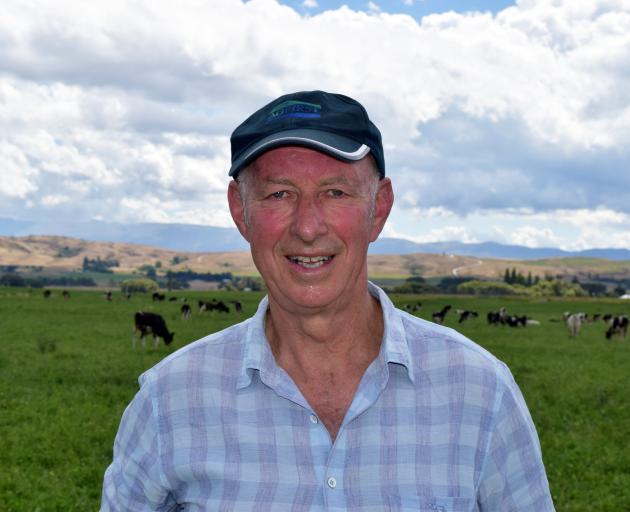
Typically, trading cattle go first and breeding ewes are the last resort.
The farm system is "high cost, high production".
A breakdown of farm income was sheep accounting for 77%, dairy grazing 11%, beef 10% and the rest includes rock quarry royalties, a hunting block lease, providing contracting and drilling services and payments for allowing film crews on thestation.
When introducing his staff and family, he described each as a member of a rugby team.
"The Ida Valley First XV. Like any great rugby team, there’s a mixture of tough grafters, skilled finishers and a few old hands that refuse to retire."
He described himself as "the old captain, a yard slower than he used to be".
His wife and station chief financial officer Dayna Paterson is the "super sub", who keeps everything running behind the scenes.
Sheep included more than 9000 Polwarth quarterbred ewes, producing more than 20 micron wool.
The best lambing season on the station was 139%.
About 5000 terminal ewes are mated to a Dorset Down ram, or similar breed, and the offspring are put in a Polwarth B mob.

The beef operation includes putting a Simmental bull over up to 200 Angus breeding cows.
Their calves are sold through winter and replaced with rising 1-year-old and 2-year-old heifers and steers.
Drones are used for mustering, to identify water leaks and for general surveillance.
"They save a labour unit and they are cheaper than a Can-Am [side-by-side] to service," Mr Paterson said.
A tour included a drive past a dam, with a 950,000 cubic metre capacity, which cost $1 million to build in 2007.
Other sights included the ruins of a pivot irrigator, 33 of its 36 spans, turned into scrap metal by strong winds.
When Mr Paterson was introducing AgFirst consultant Phil Tither, of Hawke’s Bay, he called him "the coach".
Mr Tither said data from the station had been recorded in Farmax for the past six years.
"Models are wrong but sometimes they’re useful. None of us have a crystal ball so we rely on forecast models."
Data includes weight of livestock and liveweight gains.

The first three seasons they used Farmax, the autumns had been good for farming and it made his job easier.
"I was thinking we could keep going up with stock numbers each time they put in another block of lucerne."
The next three seasons were a "wake-up call" due to a lack of pasture cover, Mr Tither said.
The feed demand during the first three good autumns was 4.5kg of drymatter per ha per day, a daily demand of 45 tonne of dry matter for the station’s about 10,000ha effective.
In comparison, to combat a challenging autumn last year, the demand was reduced to 3.4kg and livestock was taken out of the system, Mr Tither said.
"It felt like we were selling a lot of stock and I was hoping I had the numbers right because it is quite a lot of income we are carving out."
In hindsight, they probably under reacted, as feed was very tight entering spring and lambing percentages and hogget carcass weights were down.
A target was pasture cover levels to 1900kg of drymatter per hectare in February.
He believed they currently had about 1000kg available.
"Currently we are hitting the ‘oh s... button and we are wondering how we respond."

An option was selling 8000 trading lambs rather than carrying them through winter.
Another option floated was selling bull calves but the data showed it was better financially to sell the hoggets.
"We will probably lean in quite heavily to those hoggets."
Other options explored include killing sheep in autumn.
The weaning date of steer calves had been moved forward to give them more options to pull levers if needed.
Mr Tither recommended a lever be pulled early to help with the long-term performance of livestock.
When farming conditions improve, a lever should also be pushed as early as possible to rebuild capacity.
Mr Paterson said making the decision to sell the hoggets would be hard but the modelling data made a decision easier.
"It does hurt making those big decisions but the data allows you to do it with a bit more confidence."






